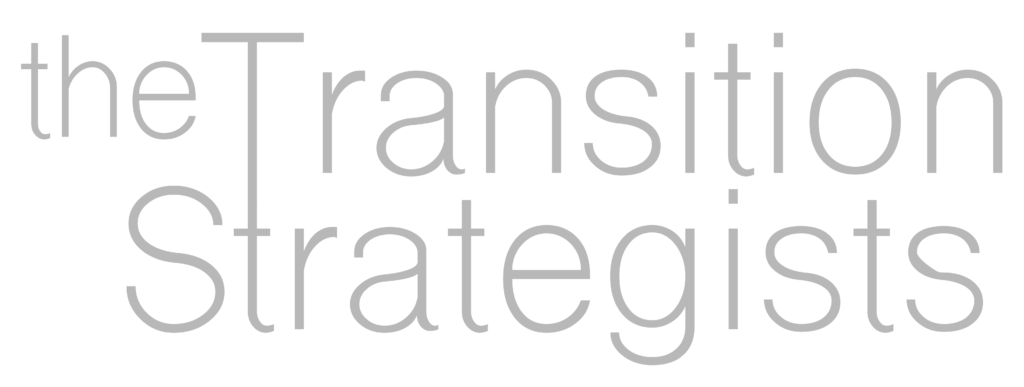The first question that owners typically think about when they begin to look ahead to leaving their companies in a successor’s hands is some variation of How much is my business worth? or How much cash do I want or need when I leave? How much . . . ? is a critically important question, but it stops many owners from making any progress in creating their business transition strategies.
The Transition Roadmap Developer™: The Gold Standard of Business Transition Strategies
Our proprietary business transition planning process, The Transition Roadmap Developer™ (TRD) does not begin by asking owners to calculate how much, and a remarkable 100% of the owners who have used it have created business transition strategies that achieved their financial and emotional goals. This success rate is all the evidence we need to know that How Much? is not the best place to start. In the TRD, before we ask How Much?, we ask Why? What? Who? and When? Only then do we tackle the questions of How Much? and How?
The Big 6™
Planning your business transition journey is unnecessarily complex if you don’t know where you are headed or have a compass to guide you. Part of the TRD is The Transition Compass™, and it consists of six points: Why?, What?, Who?, When?, How? and How Much?. Your answers to each of these questions—in this order—are the six points on your Compass. Let’s look at each.
Compass Point No. 1: Why do you want to transfer your business?
We begin by asking owners to identify the objectives that will motivate them to do the work necessary to create a busines transition that is a success for everyone involved. Owners typically have objectives for themselves, their families, companies, business partners and others who are important to them. Some objectives are so important that owners will not consider a particular strategy unless they are met. It is your objectives that lay the foundation and create the framework for the transition strategies we create.
Compass Point No. 2: What do you want to transfer?
The question What do you want to sell (or keep)? can seem simplistic, but we use it to help owners see their companies as a set of components. Once owners identify what they have (e.g., inventory, goodwill, real estate, intellectual property) they recognize that all components don’t have to be sold at one time or to the same person. Drilling down into an owner’s What? opens a host of opportunities.
Compass Point No. 3: Who will your successor be?
The obvious target of this question is the successor. Will the successor be a family member, an employee or a third party? Less obvious are the other Whos: Who will be affected by the business transition? To prevent damaging important relationships, who must buy in to the succession plan? Who must feel they’ve been treated fairly?
Compass Point No. 4: When will you transition your business to a successor?
Just as there are several Whos to consider, there are several components of an owner’s When. When will you be ready to begin the next phase of your life (your Next Adventure™), and when will you prepare for it? When will you begin to transfer responsibilities to a successor? When will you transfer equity? When will you be emotionally prepared to let go of your role as business owner and when will your company be able to succeed without you?
Compass Point No. 5: How much wealth do you want or need to support your Next Adventure?
Finally, we arrive at where most business succession strategies begin! By now, we hope you appreciate our reasons for asking the other four questions first. Once you’ve thought through the first four, you can consider not just the amount of wealth your need when you leave, but also how much of your financial security depends on the proceeds you take from the transaction, how much your business is worth and by how much you may need to increase the value of your company to reach your goals.
Compass Point No. 6: How will the transition and transaction be structured?
In this Compass Point, we tackle the logistics of a transition: Will you gift or sell ownership? Will you be paid over time or all at once? How will you minimize the tax burden on your company and successor? How do estate-related issues affect the transfer of equity? Answers to these questions require input from your tax, legal and financial planning professionals. It’s easy to appreciate why so many owners who begin with either the questions of How? or How Much get stuck!
This is, of course, just a cursory summary of The Big 6™. It’s normal not to know the answers to all six questions when you begin to create your business transition plan. Even once you answer all of them, circumstances will change and so will your answers. Transitioning your business to a successor is a journey, and it is your Compass that keeps you moving toward your destination even when you hit the inevitable bumps in the road.
If you’d like more information about The Transition Roadmap Developer™, we wrote a book about it! Check out our book here.
Elizabeth Ledoux is a co-author of the award-winning It’s A Journey: The MUST-HAVE Roadmap to Successful Succession Planning, as well as Accelerate Your Entrepreneurial Flight and Understanding the Growth of the Entrepreneur. She frequently speaks to organizations and business owners about challenges and opportunities in private and family business transitions, business and individual growth, and the business succession journey.





